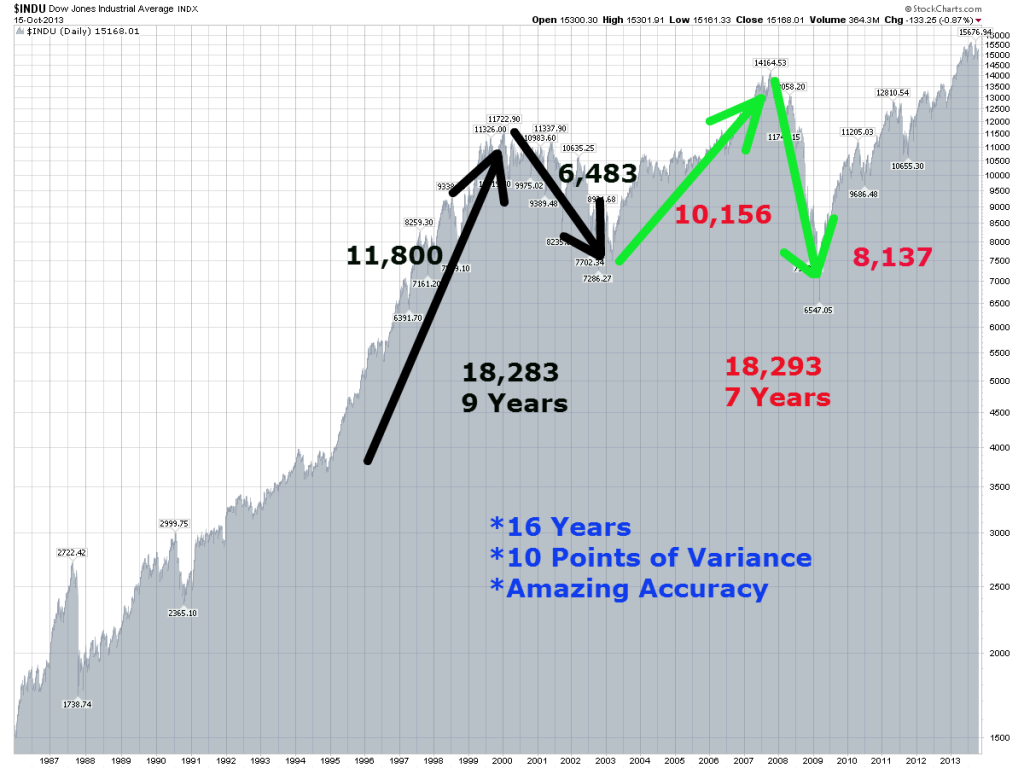This post continues to look into the mathematical work that I have been doing. Once again, indicating prefect structure in the financial markets.
The numbers derived above stem from my own unique way of looking at the stock market. They are 3 dimensional calculations that combine price and time into one number. The calculation itself is basic high school math, but I will let you figure it out if you want to pick it up from here.
I cannot overstate how amazing this chart is. Just a few points.
- The move between 1994 bottom and 2000 top was 11,800 UNITS. The Dow topped at exactly 11,800 in January of 2000. Amazing!!!
- The up move between 1994 bottom and 2000 top was 11,800 UNITS. The down move between 2000 top and 2002 bottom was 6,483 UNITS. When you combine both values together you end up with a value of 18,283 UNITS. The move took 9 years.
- The up move between 2002 bottom and 2007 top was 10,156 UNITS. The down move between 2007 top and 2009 bottom was 8,137 UNITS. When you combine both values together you end up with a value of 18,293 UNITS. The move took 7 years.
So, the combined move took 16 years and there was only 10 UNITS of variance between the moves. And you still want to argue with me that the market is random? It Is Not. Once you know and understand this structure you can time the market with great precision.
For example, if you understand the structure you know that the move from 2007 top will be exactly 8,127 UNITS. With such knowledge you can know the exact time and point location of the bottom in 2009. I mean to the day and long before it happens. Just as I predicted in 2008. So, while everyone is freaking out and trying to figure out where the bottom is you can be laying on the beach while making crazy amounts of money shorting the market.
The sample structure above is just a small sample of how the market truly works. This type of measurement is available on the daily charts as well as the long term charts.
Did you enjoy this article? If so, please share our blog with your friends as we try to get traction. Gratitude!!!

